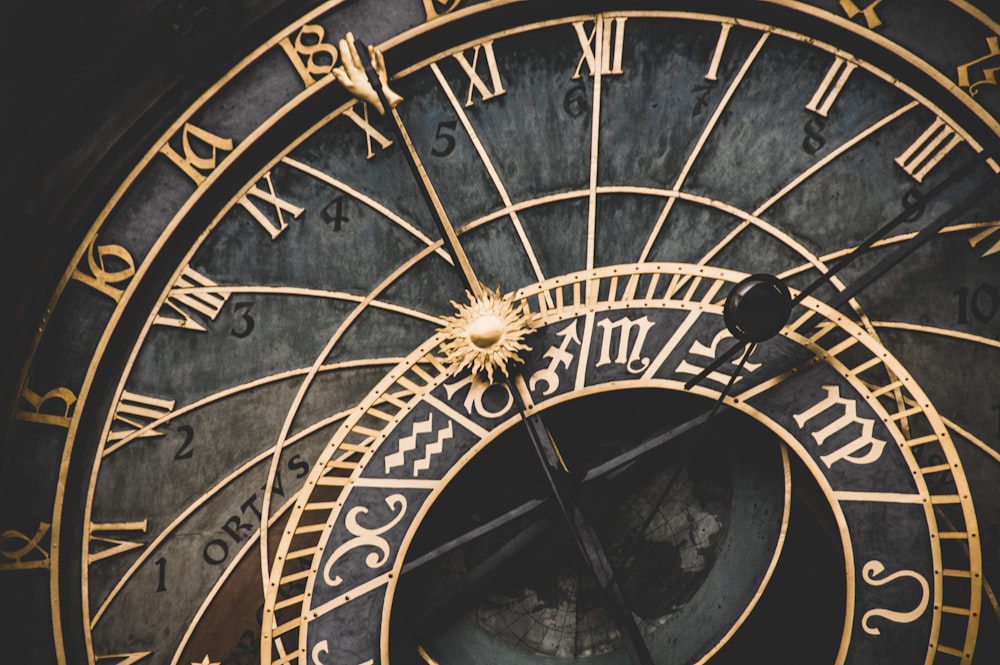A beginner’s guide to the three basic areas of astrology.

Learning astrology can be daunting. There are a lot of numbers, jargon, abbreviations, and various areas of application and study that can make it all very confusing. I will attempt to give you a crash course in “the clock of god.” If I am successful, I will provide a blueprint for learning the basics that should give you a foundation for all areas of astrology, allowing you to further your knowledge into whatever type of astrology that piques your interest.
So, let’s start with the Signs. Yes, this is the area that you probably already know a little bit about. But, don’t get ahead of yourself. You probably only know enough to embarrass yourself. I’m sure you know what is called your “Sun sign.” You’re a Libra, or a Pisces, or a Sagittarius. And I can hear you say, “But, didn’t science prove that the signs have changed, so one sign is really another sign now?” Yes, this is true. But there is something else that is true: ancient astrologers already knew about this and compensated for it in various ways. This is called “precession.” The Earth wobbles on it’s axis, and every 26,000 years or so it makes a full rotation of this cycle. Some societies called this a “great year.” But there are other “great years,” so don’t get them confused.
For our purposes, precession doesn’t affect much. So, let’s talk about your “Sun sign.” I’ll start with the fact that it means very little. Every planet, including Pluto, has meaning in astrology. They all mean something. But, one planet can take on more importance depending on where it falls at your birth. This is essentially what makes Sun sign astrology worthless. If you’ve ever read a publication telling you what will happen to you over the next week, or month, or whatever, and it only refers to this placement, you’ve been a victim of “Barnum statements.” Yeah, each of those little readings are meaningless and would be true for anyone (or no one). Anything beyond that is pure luck. So, chuck all these Sun sign ideas in the bin. However, the Sun does hold some importance. Its meaning is that of the authentic self; it is the soul, the ego. This is pretty important, it just isn’t as important as you’ve been told.
Now that we’ve gotten that out of the way, let’s discuss what the signs actually are. To put in simply, they are general themes in our life. If the sign of Scorpio is intense, secretive, jealous, and deep, then the planet of Mercury placed in that sign would mean that one’s thinking has those themes. If the Moon falls there, then these themes are manifested emotionally. If Mars falls there, you act and behave in this manner. Get it? The signs, while commonly known, are the least difficult yet least significant for standard readings. They have other uses, but we will not discuss them here. I recommend you learn the planets in the signs first. Learn the meaning of each planet and sign so that you understand the boiled-down essence of each.

The second area is “the Houses.” Each chart is separated, or chopped up, into slices of a pie. The general gist of this is to imagine a compass. The points of North/South and East/West become our focus. The Eastern point is arguably the most important in all of astrology, that of the dawning Sun. This represents the “self.” It expresses itself in a few ways, one of which is your appearance. Whatever sign is calculated to be your “rising sign,” which is the sign rising in the East at the moment of your birth, will determine your physical characteristics. This is how people will see you, but not only physically, energetically. People will perceive a certain vibe you give off, and this is your rising sign at work.
There are 12 Houses in total, and each represent areas of life that things and events will occur. The rising sign is the first house, and it is everything to do with you, personally and physically. The second house is that of value. This can be money, but it is also value systems and beliefs. The third house is about communication and early childhood. Fourth house is that of family, ancestry, and the home. It is also the “Southern point” on our compass. The fifth house is creativity and leisure. Sixth is the house of health and short-term work. The seventh house, our “Westerly point,” is that of relationships and open enemies we know about. The eighth house is the house of secrets, sex, other people’s money, and debt. The ninth house is the house of higher learning, religion, and travel. The tenth house is our career sector, fame, and how the public views us. Eleven is the house of friendship, networking, and of desires. And finally, the twelfth house is the subconscious, mysteries, and unknown enemies.

Finally, we get to the real meat. This is called “the Aspects.” I have written about this in previous articles. All other areas of astrology bow down to aspects. It can overrule, or otherwise cancel out, any of the prior mentioned subjects. The planets themselves are the real storytellers in astrology, they and the connections between them. Without the planets, there would be no predictive astrology. They are the energy behind the archetypes, they rule over the signs, and they give life and emphasis to whatever part of the chart they fall. There are only ten celestial bodies we use (Sun, Moon, Mercury, Venus, Mars, Jupiter, Saturn, Uranus, Neptune, and Pluto), which means they cannot fall in all 12 Houses. Often, many houses are empty. Some people have pile-ups of planets in one House called a “stellium.” It is things like this which tell us important matters in life. If we have many planets in the seventh house, this is the universe telling us our emphasis will be, and should be, relationships. This is not saying we will do nothing else, but it does mean that this is something we must work on for our Karma to be balanced. Many trials and tribulations will come to us through relationships of all kinds, platonic and romantic, good and bad.
But what if two planets are connected by a certain angle in different parts of the chart? Well, this is the very meaning of aspects. And it is this which will often make the houses and the signs mere afterthought. I personally have Venus in the fourth House. However, Mars is also touching her at a 90 degree angle from the first house. Does this mean that everything I do is about my actions (Mars) in relation to my attraction (Venus) to the home? No, absolutely not. In fact, it often signifies the kind of interactions I have with women. Hence, in many ways, my Venus is not expressed in a fourth house manner and meaning. Venus often represents money, so when another transiting planet (moving in the sky) comes into contact with her, I might get paid, or receive a gift of cash. But it has nothing to do with my home. So, remember, the signs are general themes, and the houses are “what area” of life things can happen. But they are not set in stone. The angles determine this.
In other previous articles, I mentioned the aspects’ meanings. I will go over them again for the sake of being comprehensive:
First, is the “conjunction.” This is when two planets occupy the same degree of the same sign. The Zodiac is a circle of 360 degrees, each Sign being comprised of 30 degrees. So, two planets at 25 degrees of Taurus are in a “conjunction.” The meaning of the conjunction is the fusion of two archetypes and energies. Mercury conjunct Mars, for instance, would be as if Mercury and Mars had a baby. The result is mixture of the two.
Next, is the “sextile.” The root word for sextile is that of six, or in this case, 60 degrees. Two planets that are roughly 60 degrees apart form a sextile. It’s meaning is that of working cooperatively which provides an opportunity.
Third is that of the “square.” This is two planets roughly 90 degrees apart, and it’s essential meaning is that of friction and conflict. The aspect has a preference for creating external events in the world, rather than many of the internal effects that other aspects provide, only experienced subjectively.
Fourth is the “opposition.” An opposition is exactly as it sounds, it is opposite something else. This is a 180 degree angle from one planet to another, and it’s meaning is that of conflict. It also has a tendency to cause severance, an action of causing a conflict and then separating the two energies or people. It can also sometimes have a balanced outcome if one puts in the effort.
And last, there is the “trine.” The root word is “tri” as in triangle, that of three, and its geometric angle is roughly 120 degrees apart. It’s meaning is that of harmony. It often bestows gifts from the planets, and requires no effort on our part. In the birth chart this is natural talents, but in transit, this is having something dropped in our lap.

There are more things to discuss. There are “minor aspects” which many astrologers don’t use. There are the “elements,” earth, air, fire, water, which describe the nature of planets. There are the “modalities,” cardinal, fixed, and mutable, which describe the qualities of the planets. There is the area of Horary astrology which answers specific questions. There is Synastry which is for relationships. Then there is Harmonics. And so on, and so on.
But the basic meanings I’ve given you should afford you a good head start. If you study them in the order I have suggested, you will be interpreting birth charts in no time. Just build step by step. You will find that many things overlap, and studying one area will be connected to another. And I highly recommend you do this yourself. Yes, I may cut a few astrologers’ pay, but you will be able to see for yourself that astrology works, despite what many would have you believe. There are more things in Heaven and Earth, dear reader, than are dreamt of in your philosophy.





